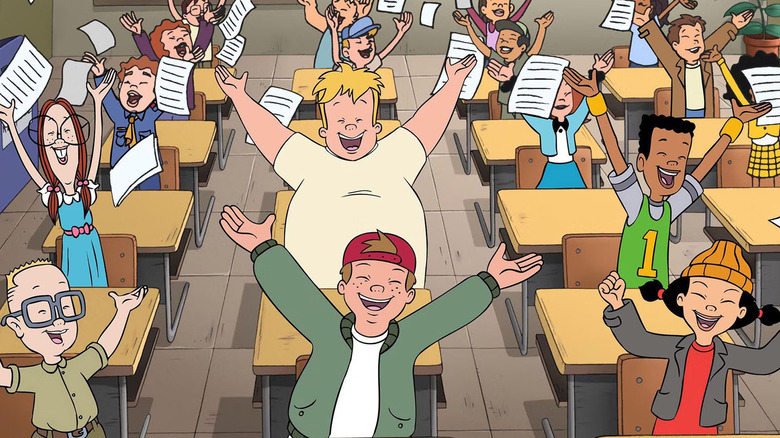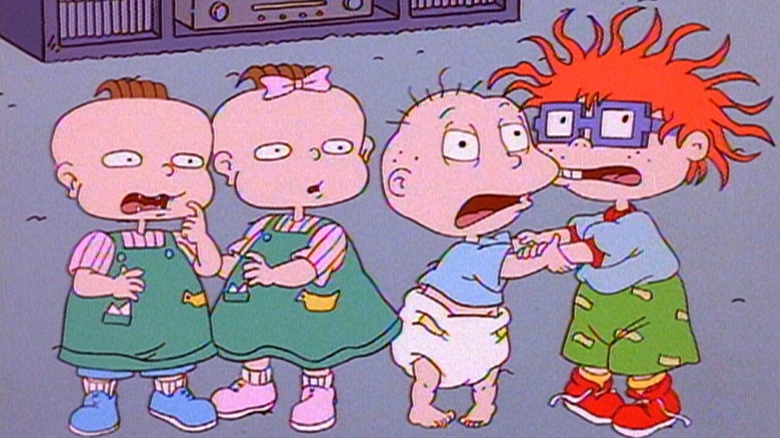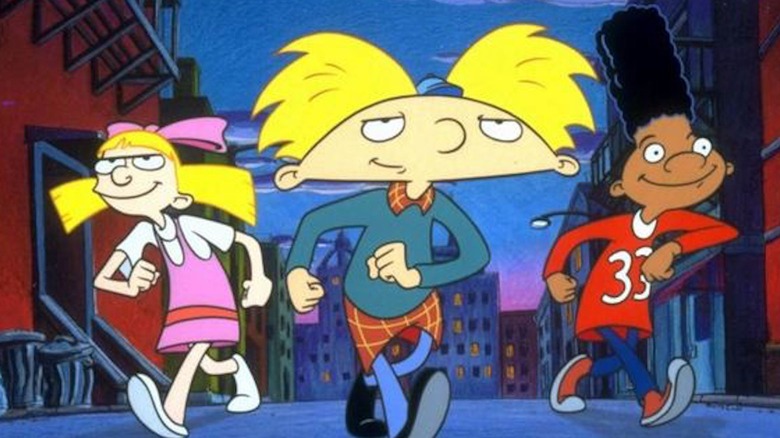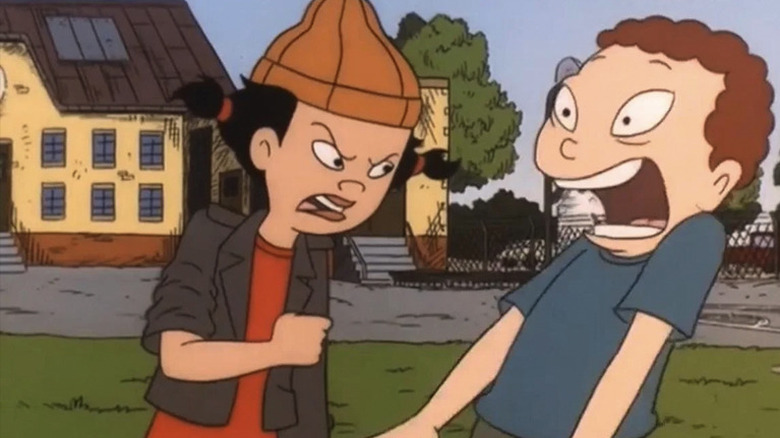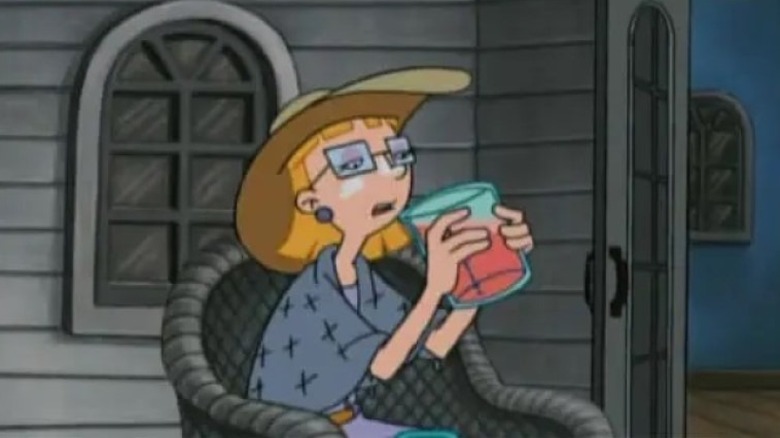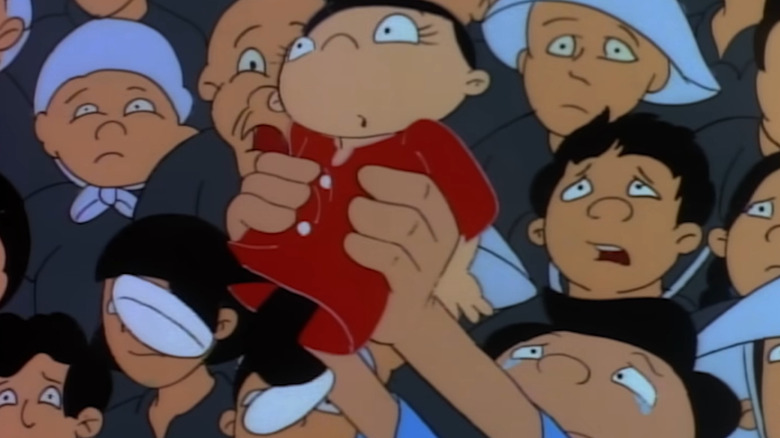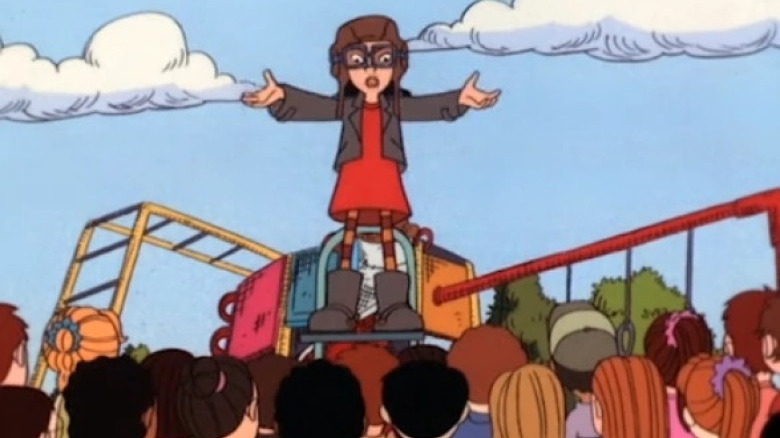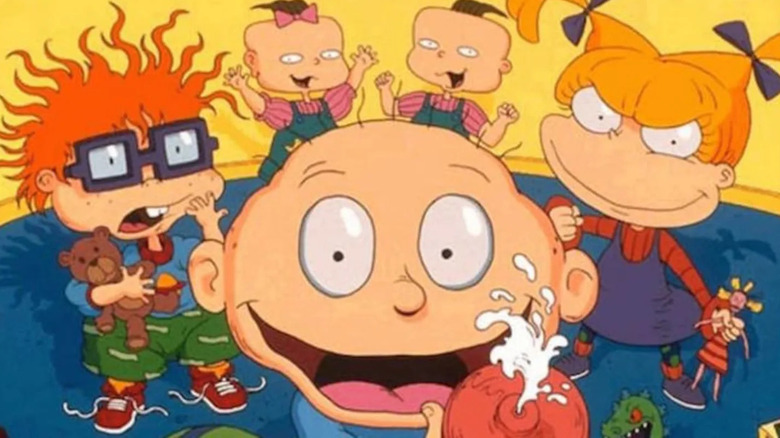Recess Co-Creator Joe Ansolabehere Recalls Studio Notes About Recess, Hey Arnold, And Rugrats [Interview]
(Welcome to My Most Ridiculous Note, a series of interviews in which animators talk about the weirdest and funniest notes they received from studio executives.)
Back in the '90s, Nickelodeon revolutionized the TV animation industry with creator-driven shows like "Ren & Stimpy" that took an unconventional approach to story, tone, themes, and visuals. One show at the forefront of that change, with its experimental animation and storytelling that changed what we thought about children's cartoons, was "Rugrats."
Joe Ansolabehere was one of the writers who helped make "Rugrats" into that '90s cultural juggernaut. A writer on that show just as it became mega-popular, Ansolabehere also helped develop "Hey Arnold," one of the most mature children's shows of the era, with adult characters and a rare urban setting populated with endless stories and legends. He also co-created "Recess" (still one of the best Disney cartoons), which perfectly captured the intricacies and quirkiness of middle school and all its social cliques.
Ansolabehere has seen it all, and he has a lot of stories to tell. We barely scratched the surface when we spoke to him about his work on these three cartoons, and the various notes the studios and producers focused on. Still, it illuminated what made these shows special and beloved even so many years later.
A baby's gotta do what a baby's gotta do
"Rugrats," created by Gábor Csupó, Arlene Klasky, and Paul Germain follows the day-to-day of a group of toddlers and the problems that get blown out of proportion because they are, well, babies. From retrieving a ball from a neighbor's yard that becomes an epic odyssey like "Lawrence of Arabia," to going to see Reptar on Ice, the show tracked their adventures, their creative problem-solving methods, and their bonds of friendship.
Joining the writers' room of the show were Joe Ansolabehere and his writing partner, the late Steve Viksten. The two were fans of experimental films and the works of directors like Bergman, Godard, and Truffaut. Those names aren't exactly the first that come to mind when thinking about "Rugrats," but Ansolabehere says that's exactly how it felt to work on the show in the beginning — it was more experimental and almost avant-garde. "You had this atmosphere of people trying to do wild and crazy things, and at the same time, hold it back and make it a kids show," Ansolabehere told us.
And the show was definitely for kids (it was about babies, after all), with small-scale stories that kids could enjoy and relate to. But at the same time, the show quickly proved to be more mature than some of its contemporaries, from a groundbreaking episode depicting Jewish Passover to normalizing breastfeeding and even portraying the death of a parent.
As Ansolabehere told us, the writers didn't really think of "Rugrats" as a kids show. Sure, they knew they couldn't curse or show guns or things like that, "but we were thinking of it more like 'Taxi'" and other sitcoms like "Seinfeld" or "Friends." Likewise, each writer and each director had complete control over their singular vision. "Every episode was its own film," he added.
This led to the very experimental look of early "Rugrats," with every episode looking vastly different from one another. Sadly, the network became more interested in having a controlled and uniform look for the show, which stopped that experimentation. "We never have really been able to do that again," Ansolabehere recalled. "It's very hard to do that. And the system quickly became 'no.'"
A football head in the big city
Shortly after "Rugrats," Ansolabehere and Steve Viksten, together with fellow writer Craig Bartlett, developed "Hey Arnold" for Nickelodeon. The show follows the adventures of Arnold, a fourth grader with a football-shaped head living in the big city and getting in trouble with his friends, including master storyteller Gerald, and the multi-faceted Helga G. Pataki, a bully (like "Rugrats" character Angelica) who secretly harbors a huge crush on (and even has a secret altar devoted to) Arnold. That's a character trait that Lisa Groening, sister to "The Simpsons" creator Matt, and then-wife to Bartlett, came up with.
According to Joe Ansolabehere, there were arguments early on about what kind of show this would be, with him, Viksten, and Bartlett having different ideas and angles in mind. Ansolabehere ended up writing mostly about Arnold doing kids' stuff, like helping Eugene when he thought he was jinxed, or tutoring a bully into getting a C. Meanwhile, Viksten wanted to focus more on the adult characters and wanted to make the show about "a kid looking at an adult world," and focused on characters like Helga's parents, or fan-favorite Mr. Hyunh.
When he did write kid-centric episodes, Viksten delivered iconic stories like "Stoop Kid." As Ansolabehere tells it, Viksten also came up with the idea of a married couple having marital issues. They evolved into Oskar and Suzie Kokoshka, who were modeled after Viksten's former bosses, Arlene Klasky and Gábor Csupó (Csupó even ended up voicing Oskar in the show) and based around the end of their marriage, as witnessed by the writers on "Rugrats" years prior.
At one point, Viksten started taking tropes from old sitcoms and doing new spins on them for "Hey Arnold," and wrote a script where Oskar and Suzie fight, so Oskar moves into Arnold's room. "It was something out of 'The Andy Griffith Show' or 'The Honeymooners,'" Ansolabehere recalled. "But when we got to the end of the read-through I told Steve, 'This is a 'Taxi' episode. We actually did it.' He got it up to that level of great writing we were always shooting for on 'Rugrats.'"
Never kid a kid who hasn't had his recess
Disney's "Recess" was part of a wave of shows like "Pepper Ann" and "Doug" that captured a specific time in a kid's life with nuance and care, this one centered around fourth graders and what they do during recess. Ansolabehere created the show with "Rugrats" co-creator Paul Germain, and considers this the show he was trying to make with "Hey Arnold," one that was solely focused on a kid's perspective in a kid's world, rather than expand it to also be about adults.
The show was surprisingly smart for a Disney show of the era, dealing with adult themes but through children's eyes, and somehow exploring a rather formulaic premise with infinite variation as it zoomed in on the many characters that populated the playground and peeled back their many layers.
"Recess" was also unique in the way it dealt with child development. As Ansolabehere tells it, they worked with John Arnold, a consultant and child psychologist, to figure out the best way to speak to the show's audience and portray these stories. When "Recess" did a bully episode, it did something rare for the time (or even now), and avoided a simplistic answer of suggesting that merely standing up to a bully will instantly solve your problems. Instead, the writers had Gus, a skinny and short kid, stand up to the bully and still get the hell beaten out of him. It isn't until the rest of the class joins in standing up to the bully that the bigger kid stops.
The show was so successful it spawned a theatrical feature film, which somehow introduced "James Bond"-type stakes, like a guy moving the moon so kids don't have summer vacation. "It was kind of like making a 'Seinfeld' movie. The idea is it's a show about nothing," Ansolabehere said. "When you have [crotchety teacher] Miss Finster beating guys up and stuff, and I think it's funny and everything, it's just different. It's just different from what I wanted it to be."
Notes about bully toddlers and alcoholic parents
Despite how popular these three shows were, they were not free from notes from the studio.
While working on "Rugrats," Ansolabehere said the writers had a lot of freedom regarding the type of stories they told. Many of the big notes actually came not from Nickelodeon, but from co-creator Arlene Klasky herself. "In a way, she was more of the [Standards & Practices] person because she was so concerned about the kids and her own children, and what they were going to see on the air," Ansolabehere recalled, as he recalled one time when Klasky went to the writers' room angry that "somebody wrote the S word" in a script.
Thinking it was a swear word, the writers got angry that someone let that slip through. "And it was the word 'stupid,'" Ansolabehere continued. "We knew 'you stupid babies,' was going to be Angelica's catchphrase and something that was going to be on T-shirts and make millions of dollars. But Arlene didn't want it [...] Nickelodeon wasn't saying we couldn't use stupid, it was Arlene."
By the time "Hey Arnold" came about, the studio got more involved, especially in the visuals, with a supervising director making sure the show had a uniform vision. On the script level, Ansolabehere recalled many scripts Steve Viksten pitched were full of notes. At one point Viksten wanted a character that was "an older woman who was always drinking when she answered the door," and talked in a flirty way, but was scrapped. Viksten also had the idea of making Helga's mom an alcoholic. "We're never going to see it, but she'll always have a drink in her hand," Ansolabehere explained. Though the network was initially adamantly against it, that became a legendary part of the show that kids started realizing as they re-watched the series over the years.
Arnold's Christmas episode and notes about Vietnam
One of the most groundbreaking episodes of "Hey Arnold" started as one of the simplest: a Christmas episode. After Ansolabehere announced his departure from the show but before he left, Viksten asked him for help on a Christmas episode, which he wanted to center on Mr. Hyunh.
"Steve had been pitching this story since the Mr. Hyunh character had been invented about a flashback to Vietnam, but the network kept saying no," Ansolabehere recalled. The two came up with a story in which the housing building Arnold lives in holds a Secret Santa, Arnold pulls Mr. Hyunh's name, and all Mr. Hyunh wants is to reconnect with the daughter he got separated from in Vietnam and who is somewhere in the city.
Though the outline was approved through most stages of production, eventually Nickelodeon realized what the episode was and they rejected it. At this point, they had only finished the first half of the episode, ending with the Vietnam flashback. An executive at Nickelodeon at the time took the early animatic home to decide whether to kill the entire episode.
"She popped it in and her son, who was like nine, was sitting there and watched it. And it got to the end of the Vietnam thing, where he's holding the baby up and the helicopter guys take the baby and everything, however that ends, and he comes back and he goes, 'So, that's my problem.' And it ends. And the little boy turned to his mom and said, 'Mom, is that what Vietnam was all about?' And [the executive] said, 'Approved. We're doing this.'"
According to Ansolabehere, the network's argument at the time was that kids weren't going to care about those things, but the writers considered kids to be smart. "They know way more — they hear what's going on in the adult world ... I think that was the key to why 'Arnold,' when it was really good, was really good."
Even more notes about cults and space seat belts
By the time "Recess" was underway at Disney, Ansolabehere said he and his team were cockier about how they handled notes since he and Paul Germain had already been involved in highly successful shows, and managed to get away with plenty.
On "Recess," however, there was one studio note that almost broke an entire episode. The final episode of the first season of "Recess," titled "Swing on Thru to the Other Side," follows a girl who spends her entire days on the swing at the playground and she tries to swing over the top and complete a loop. The episode finally shows the Swinger Girl as she successfully reaches the top, but only Spinelli sees her. Shocked by what she saw, and unable to find the Swinger Girl after the fact, she starts a cult to the legend of Swinger Girl and how she broke through to another dimension.
"It immediately got rejected," Ansolabehere said. "'You can't criticize religion, we're Disney,'" they argued. But as the end of the year approached, it was coming down to crunch time and one last episode was needed to fill out the season. Barry Blumberg, a Disney executive, suggested resurrecting the Swinger Girl idea. When Ansolabehere reminded him that standards and practices department had rejected the premise because of its religious connotations, Blumberg responded, "Oh, that's stupid. Let's just do it."
"I was really proud of it," Ansolabehere recalls. "I was really proud of what it was and what it said about cults, the formation of cults, and how we get ideas and we just can't let them go and how we shift reality to mean something else."
But just before the episode aired, "somebody big" at Disney saw it and once again tried to quash it, telling the team, "No. You are never airing that episode. That is a critique of religion." Blumberg fired back, protesting that "by contract, we can't have another re-run at ABC," and that was enough to convince the network to air it.
"They said, 'Okay, you can air it once, that's it. It never will be aired again' ... [but] they just forgot about it. They just kind of left it in the run-up. I think it didn't air maybe that next season again, but then eventually they just said, 'Ah, whatever,' and put it out, because they didn't get any letters. They expected, 'We're going to get a lot of letters. People are going to be [furious],' but nobody cared."
After "Recess," Ansolabehere and Paul Germain teamed again to create "Lloyd In Space" for Disney. The show was a sci-fi comedy about a green-skinned alien kid going to school. For that show, someone working at the network's Standards and Practices department wanted them to put seat belts in the school bus spaceship."We said, 'They're in space! There's no gravity!' But she was adamant," Ansolabehere said. "The problem was we'd already done a lot of animation, so after a while, someone had the idea of using magnetic seat belts. It'd just be a magnet that goes on their chest, goes right through them and holds them to the seat with another magnet behind them, so we only had to draw a round dot on all characters. No one's going to know what that dots are unless you explain it, which we never did, but that was all she needed."
A cartoon legacy
Even decades later, "Rugrats," "Hey Arnold," and "Recess" are beloved by millions and considered some of the best cartoons of their time. Spielberg once called "Rugrats" a classic and described it "a TV's 'Peanuts' of our time," and it remained the biggest show on Nickelodeon until "SpongeBob SquarePants" came along.
"Hey Arnold" remains, 20 years later, one of the most fascinating and mature cartoons of the '90s, and even got a movie concluding its story more than a decade after its finale.
As for "Recess," the show may be coming back sooner or later. After both "Rugrats" and "Hey Arnold" were brought back to our screens, Ansolabehere confirms there have been talks about a "Recess" reboot, and he's been developing it with Paul Germain the last couple of years. "We've come up with several different angles and we've tried different things. It's been four years that we've been working on it," Ansolabehere said. "But that's an example of how things have changed ... things are slower." No matter how long it takes, however, this is exciting news for any kid who grew up watching cartoons in the early '00s.
